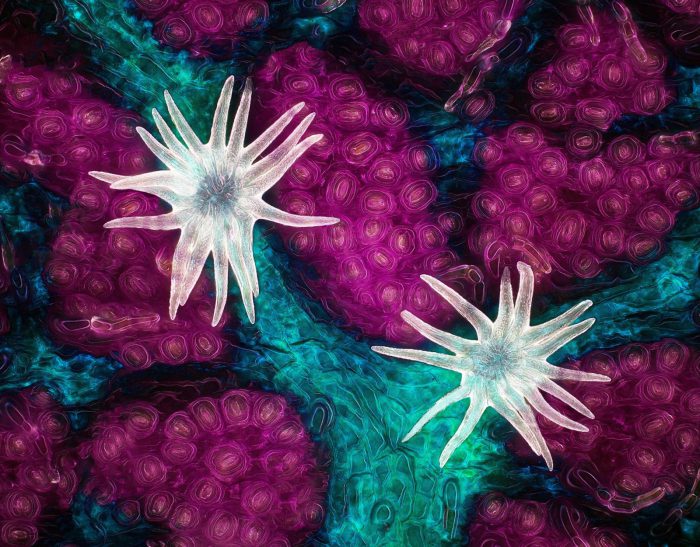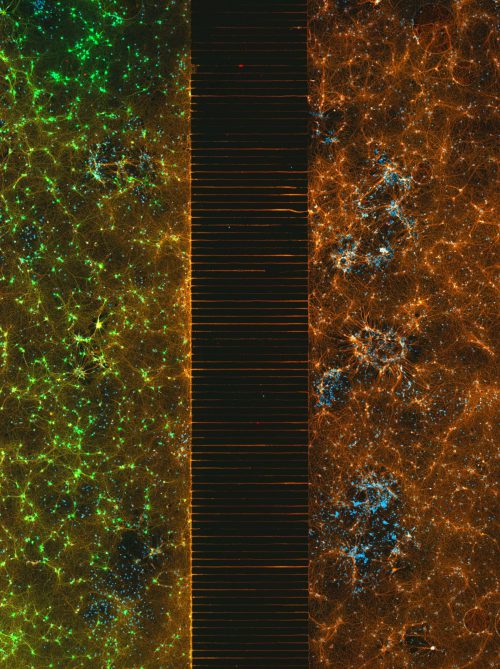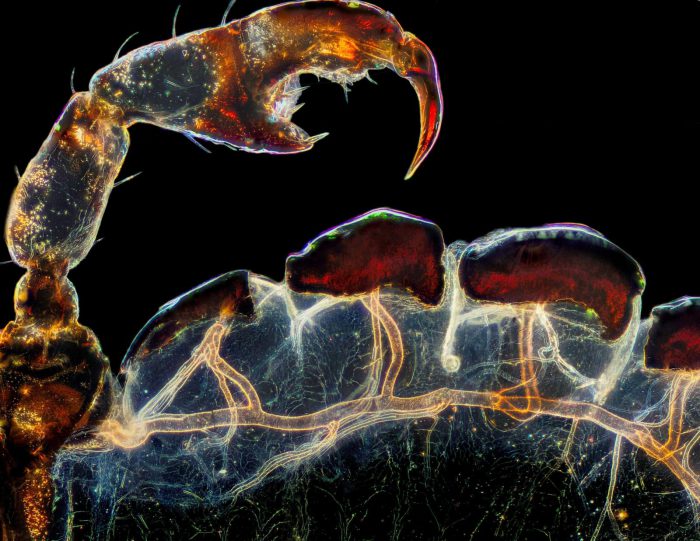What are the most impressive, awe-inspiring things on Earth? That's always a matter of opinion. But we want to share something with you that's a fact.
Size is deceptive.
Proof of that can be found in the winners of Nikon's Small World photomicrography competition. For 47 years, this contest has challenged photographers to explore one of the furthest frontiers of their craft. Using microscopic photography to capture images of the very small.
Are you ready to see some tiny wonders? Let's zooooooooom in!
First place

Would you believe that this picture is of the surface of an oak leaf? (Jason Kirk/Nikon Small World)
The top prize went to Jason Kirk of the Baylor College of Medicine in Houston, Texas. His image is of tiny organisms called trichome (in white) and stomata (in purple) on a southern live oak leaf. The result looks like octopus floating in a distant space nebula. So cool!
Second place

This field of neurons shows the delicate network that allows our brains to function. (Esmeralda Paric and Holly Stefen/Nikon Small World)
And if you thought that was mind-blowing, get ready for something that is actually a mind blown wide open! The second prize went to a pair of Australian neuroscientists (brain specialists!) named Esmeralda Paric and Holly Stefen. They snapped an image of two groups of around 300,000 neurons. These create the essential networks in a brain that also signals to be sent through the organ. Down the centre is a bridge that has grown between the two networks made of axons, which are like the arms of a neuron that connect them.
Like we said. Mind-blowing!
Third place

Gotcha! Watch out for the claw of this dog louse! Just kidding, it's smaller than a grain of rice. (Frank Reiser/Nikon Small World)
The final image we'd like to show you might spook you out a little, but don't worry. It's not some giant alien lobster. It's just a dog louse! (These are the cousins of head lice that many humans unfortunately encounter.)
In this case, it is of the rear leg, claw, and respiratory tract (breathing system) of the creature, which is small enough to crawl on a single strand of hair. You can thank Frank Reiser of Nassau Community College for this amazing view! And if you'd like to see even more, there more than 100 images from competition being displayed on the contest's website. It's all extremely fascinating!
 Would you believe that this is a cotton T-shirt with pollen grains on it? Come enter the microscopic world! (Dr. Felice Placenti/Nikon Small World)
Would you believe that this is a cotton T-shirt with pollen grains on it? Come enter the microscopic world! (Dr. Felice Placenti/Nikon Small World)










Wow! Amazing photos! :0